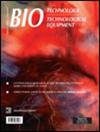硬粒小麦每穗粒数的两个QTL
IF 1.4
4区 生物学
Q4 BIOTECHNOLOGY & APPLIED MICROBIOLOGY
引用次数: 0
摘要
摘要穗粒数(KNPS)作为小麦产量的三个组成部分之一,在决定小麦产量中起着关键作用。在本研究中,结合先前构建的由硬粒小麦和野生二粒小麦杂交形成的四倍体小麦重组自交系(RIL)群体的遗传图谱和来自四种环境的表型数据,鉴定了KNPS的两个主要且稳定表达的数量性状基因座(QTL)。Qknps-DW-3A.1和Qknps-DW-3A.2两个QTL解释的表型变异分别高达12.52%和29.52%。阳性等位基因均来自硬粒小麦。金字塔分析表明,这两个阳性等位基因的组合对KNPS的增加影响最大。将这两个QTL的物理间隔与先前报道的QTL进行比较,表明它们可能是新的基因座。并对KNPS与其它农艺性状的遗传相关性进行了评价。总之,本文报道的两个主要且稳定表达的四倍体小麦KNPS QTL应可用于小麦育种。本文章由计算机程序翻译,如有差异,请以英文原文为准。
Two QTL for kernel number per spike identified from durum wheat
Abstract As one of the three yield components, kernel number per spike (KNPS) plays a key role in determining wheat yield. In this study, in combination with the previously constructed genetic map for a tetraploid wheat recombinant inbred line (RIL) population developed from the cross between a durum wheat and a wild emmer wheat and phenotype data from four environments, two major and stably expressed quantitative trait loci (QTL) for KNPS were identified. The phenotypic variation explained by these two QTL, Qknps-DW-3A.1 and Qknps-DW-3A.2, was up to 12.52% and 29.52%, respectively. The positive alleles were both from the durum wheat. Pyramiding analysis suggested that the combination of these two positive alleles has the largest effect on increasing KNPS. Comparison of physical interval for these two QTL with those reported previously showed that they may be novel loci. Genetic correlations between KNPS and other agronomic traits were also evaluated. Taken together, the two major and stably expressed QTL for KNPS from tetraploid wheat reported here they should be useful in wheat breeding.
求助全文
通过发布文献求助,成功后即可免费获取论文全文。
去求助
来源期刊

Biotechnology & Biotechnological Equipment
工程技术-生物工程与应用微生物
CiteScore
3.10
自引率
0.00%
发文量
90
审稿时长
1 months
期刊介绍:
Biotechnology & Biotechnological Equipment (B&BE) is an international open access journal publishing cutting-edge research. A modern world requires modern biotechnology and nanobiology. The journal is a forum that provides society with valuable information for a healthy and better life and promotes “the Science and Culture of Nature”.
The journal publishes original research and reviews with a multidisciplinary perspective; expanded case reports with a focus on molecular medical research and advanced practice in evidence-based medicine are also considered.
 求助内容:
求助内容: 应助结果提醒方式:
应助结果提醒方式:


